Preview: UpTone JS-2 Linear Power Supply
This is the JS-2 Linear Power Supply from UpTone Audio, recommended retail price (if buying direct) is $925 USD.
Hands down the JS-2 is my most expensive power supply. It makes the 95th percentile when it comes to expensive toys in terms of cost. Why do I spend so much money on power? Some says "bits are just bits"! For me, this is less of "a fool and his money are soon parted", but more a case of "shut up and take my money".
The JS-2 is that good!
Placed an order immediately after listening to a modified unit at a local audiophile's place. There was a wait time as only a limited number of JS-2s are made every month. But once it was shipped, it got here quickly - sent via FedEx on Thursday (California, USA) and delivered the following Monday (Perth, Australia).
A more in-depth review will be posted later as I don't have my primary DAC to audition this. My intention is to run this baby in for a week before I even listen to it.
This is just a quick unboxing for now, a beautiful unit indeed.
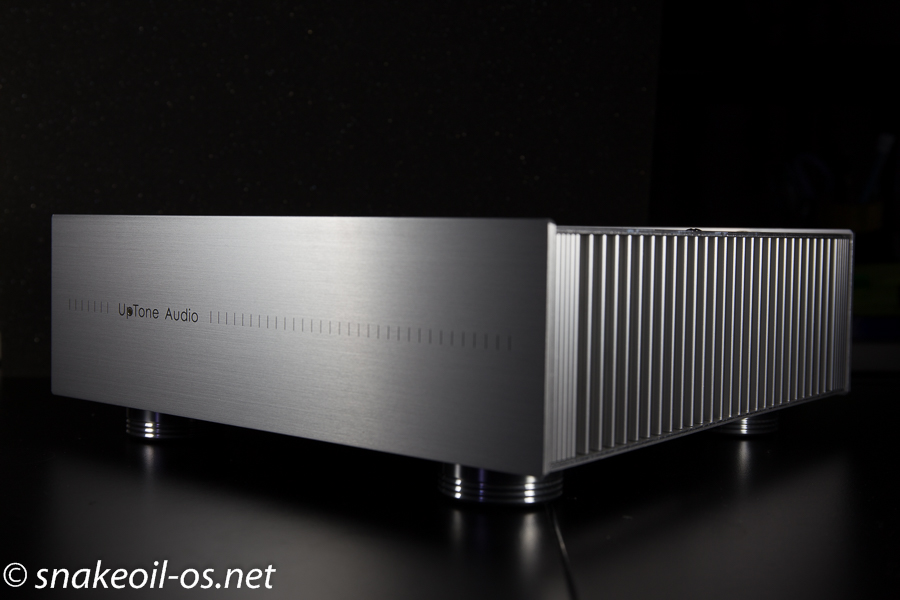
Nothing interesting to see so far. Here you can see the postal address of UpTone - Mariposa, California.
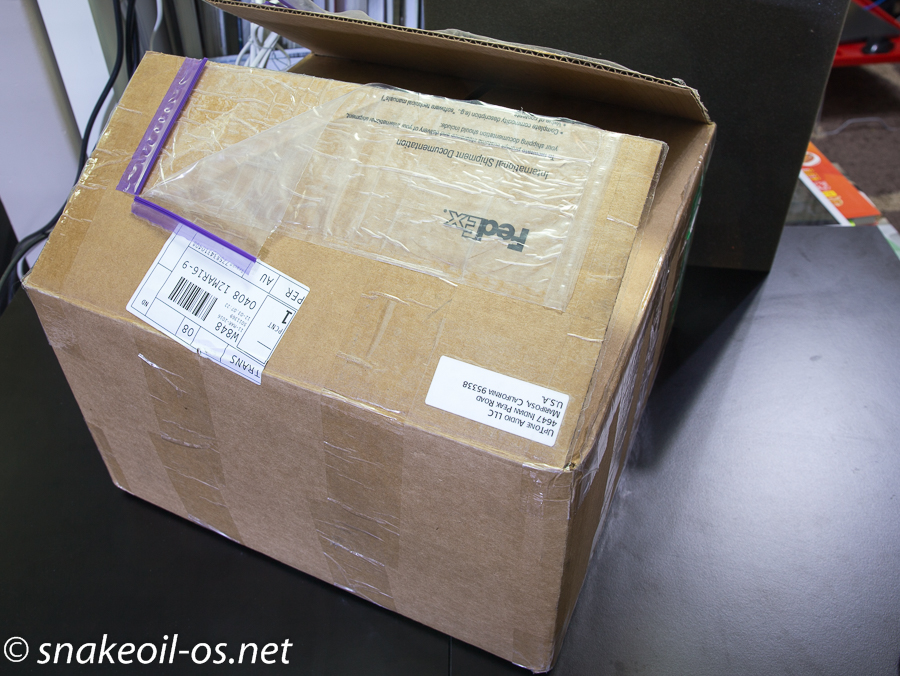
Looking inside the box we see 2 x DC cables (one included with the purchase, second costs extra), a SMA cable and a shielded US power cord.
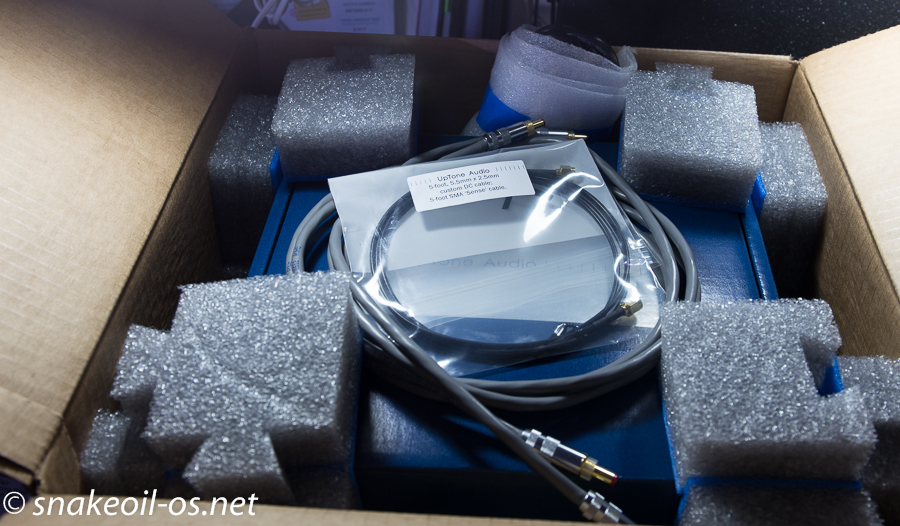
The PSU is stored in another blue box (more on that later), and "suspended" within by 8 custom foam blocks.

I really like how the corner blocks are constructed, it is a flat piece of foam specially cut and folded so it makes up a corner. The foam on the left in the shape of an 'L' is the original foam and if cut strategically, allows you to fold it inwards to form the shape on the right.

The JS-2 PSU is very well protected indeed!
The DC cables are grey Belden 9418. They appear to be of reasonable construction and flex (if not a tad industrial). Both ends are terminated with Oyaide DC barrels. These cables don't have that audiophile flashy look, but should do the job.
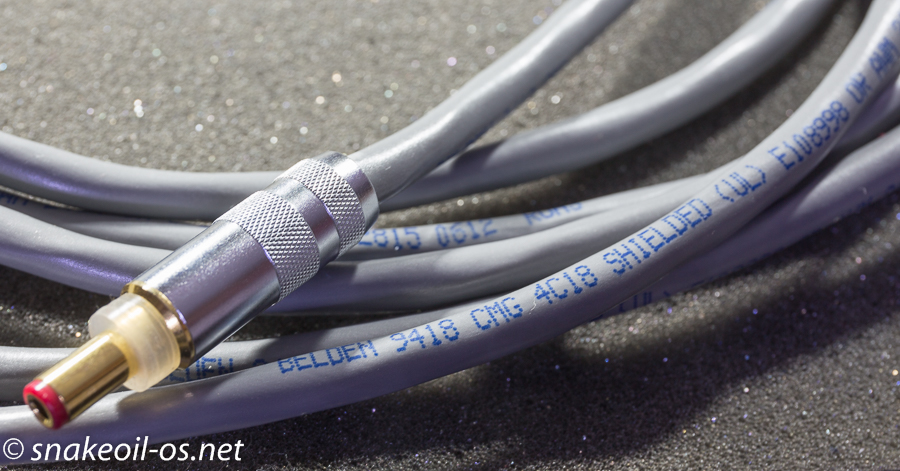
These plugs have some sort of plastic/rubber spacer on the DC barrel, meaning they can be adapted to different depths and support the DC plug itself if the DC input jack of your equipment is shallow. If the DC input depth is deep you can remove the ring for a better fit.
I wonder whether the metal plug is grounded or not (something to test later).

The JS-2 box itself - blue box with a flashy silver label:
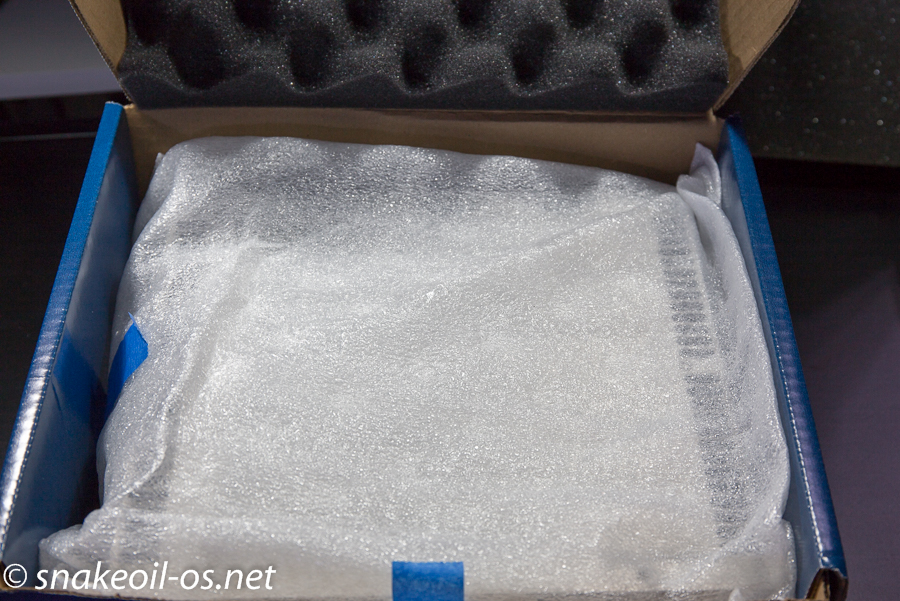
Sandwiched between more packing is a glimpse of the JS-2. Did I mention it was well packed?
The final unboxing. The unit is surprinsgly well balanced when held. Weight is distributed equally (this makes it easy when trying to move them in place and wiring).
According the the website, the dimensions of the unit is approximately 9.0 inches wide x 9.1 inches deep x 3.3 inches tall (that's approximately 23 cm x 23 cm x 8.5 cm) and weighs 10.5 pounds (approximately 4.5 Kg). The six top screws appear to be made of stainless steel and will not burr easily (good for DIY folks).
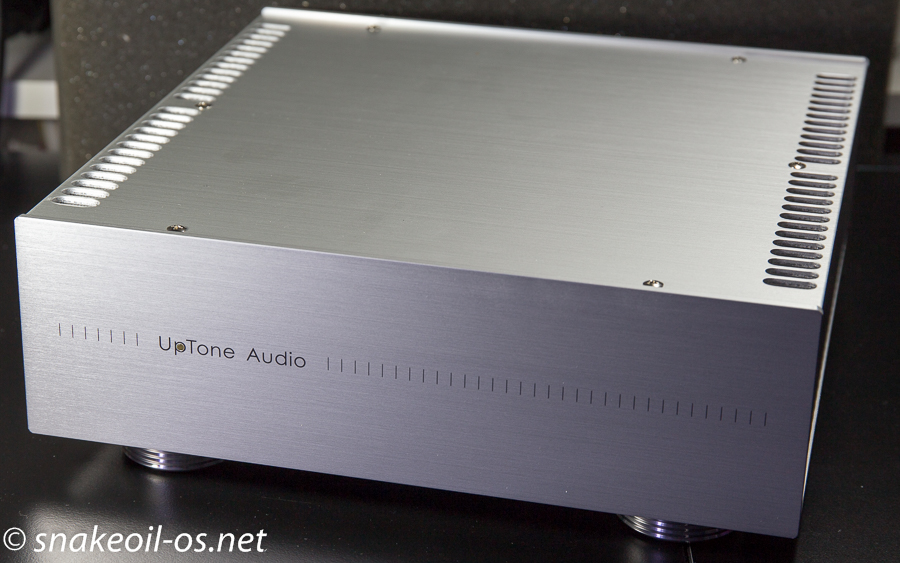
Funnily enough, I have the same feet for my computer player. This is the JS-2 under natural light and exposed normally.
At the back of the PSU, there are are two rails (each individually selectable from 5V, 7 V, 9 V and 12 V). A fault LED (one for each DC output) will light up when it detects a fault (perhaps a short?). The fault light lit up when I tried to measure the DC across it. But powering it off and on again seems to reset the protection circuit. *phew*
Some quick tests shows the JS-2 unit itself is earthed, but the DC ground is isolated from the mains. If you previously ground your system via the PSU (e.g. like I did previously with the HDPlex), the system will have a floating ground with the JS-2.
The easy way to know if the audio system is still grounded is to run your fingers lightly over any metal surface of your Hifi after about 15 minutes of powering up - if you feel a funny sensation then your system has a floating ground.
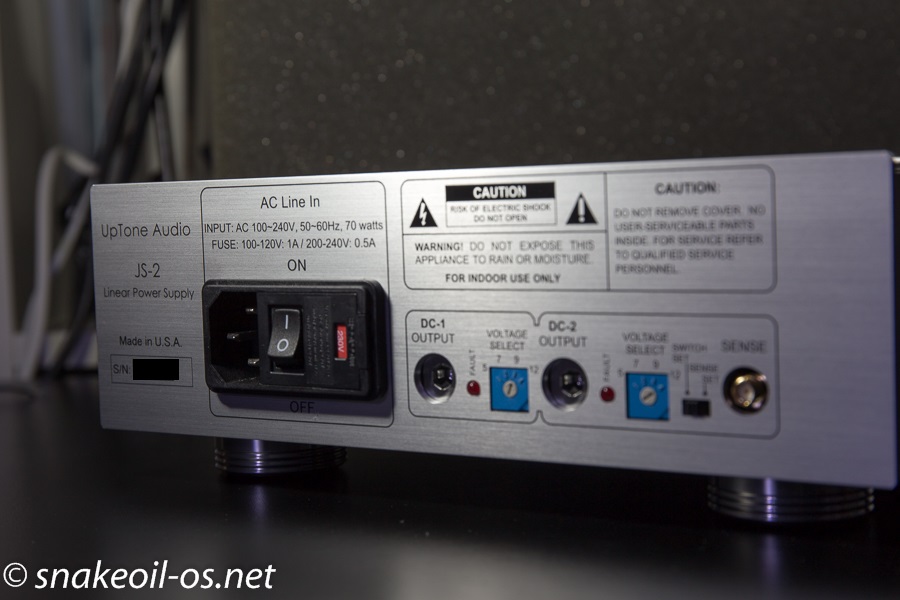
With voltage set to 5 V, the output measures 4.95V; at 12 V, the output is 12.03 V. This could be a problem (for me I reckon the voltages are a tad too low) but my computer booted up fine, so perhaps not.
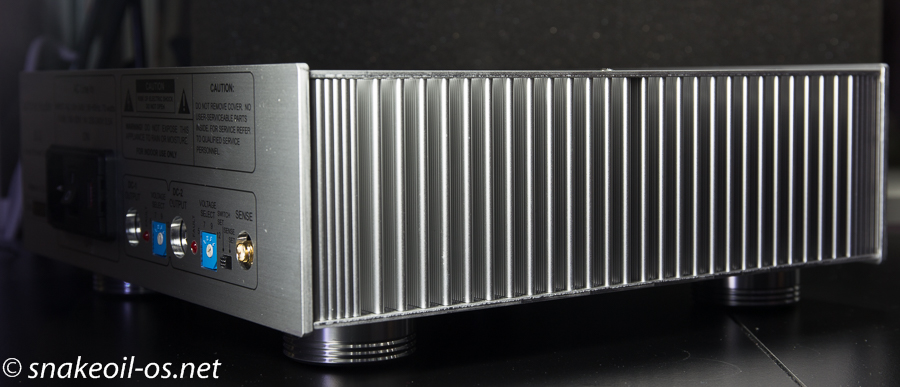
Heat sink fins on both sides to help dissipate heat.
The last picture - an internal shot. Notice there are no ventilation - the electronics are 100% completely shielded. This should in theory not radiate any electrical noise. I like the JS-2 even better now.

Heat is drawn away via conduction to the side fins. The use of a copper block is probably to improve conduction efficiency, thereby reduce internal temperatures to a minimum.
R-core transformer - check. Choke - check. Everything looks to be in order here. Ha, I'm kidding! I honestly don't know how all this work, and not interested to find out really. Construction wise the JS-2 is really well thought out, modular, functional and practical. The looks may well not appeal to all as it's on the side of industrial, but the way it sounds will win a lot of people over.
The simplicity of it hides a deeper complexity.
So, there you go, the JS-2 unboxed. I hope you like these pictures (took on a 40°C day). I will write a proper snakeoil review of the JS-2 once I get my DAC back. (Update: Check out the review here)
Follow The Music, Follow Snakeoil


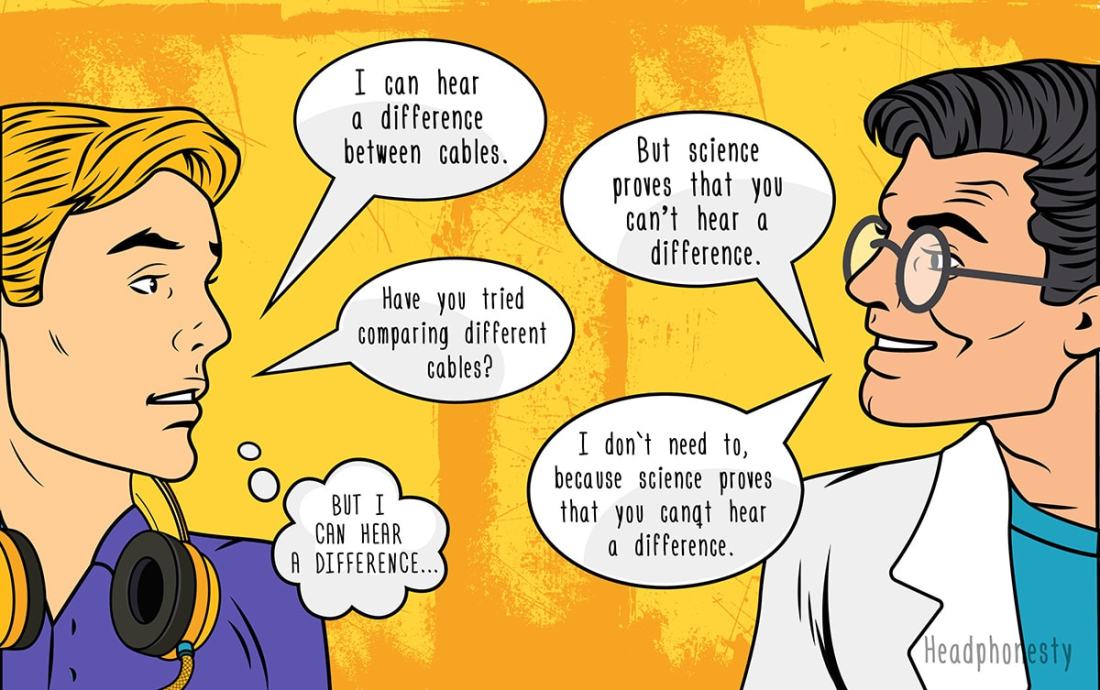
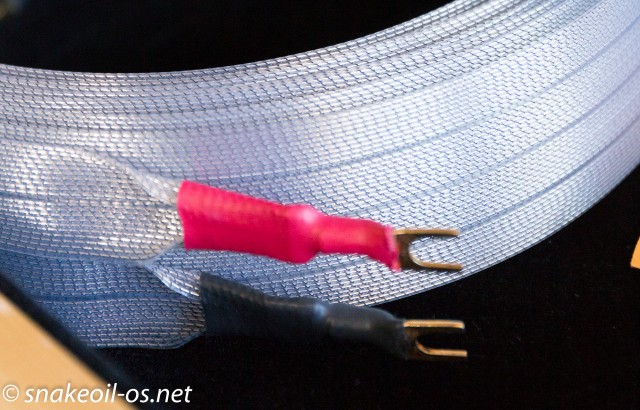
Comments
Hi Agent Kith, i have read…
Hi Agent Kith, i have read the entire upgrading process of the JS-2. it really makes me upset reading that you consider the HD Plex a toy after the upgrade!
i was hoping to have a very good psu!!!!!!! used by several DAC’s producers as an upgrade .
the JS2 is really expensive, considering that shipping and custom fee to import are about $ 350. and 2 channels only.
not to mention the cost of the upgrades you have performed. But i am sure that you have now quite a perfect psu unit
Add new comment